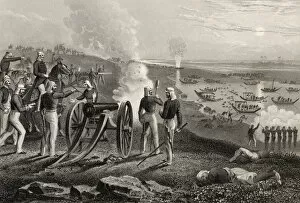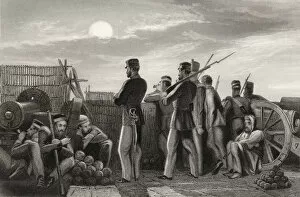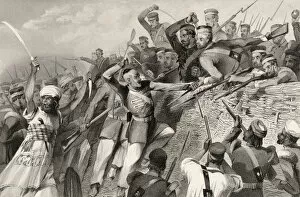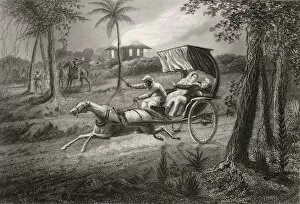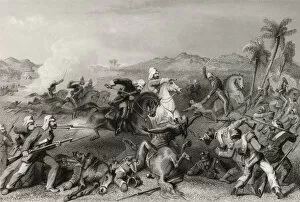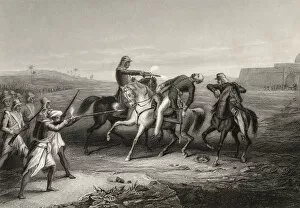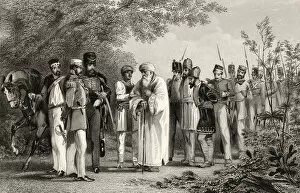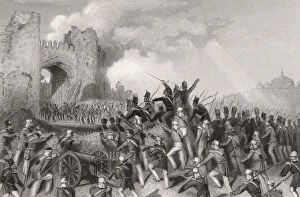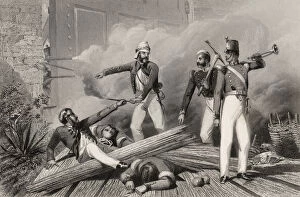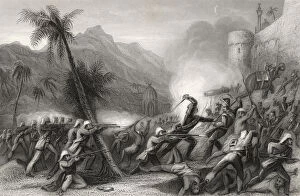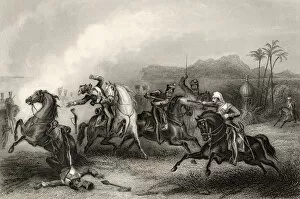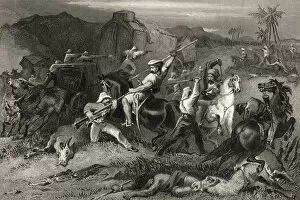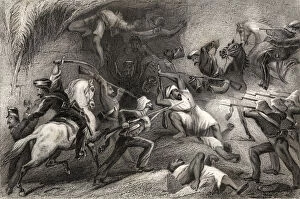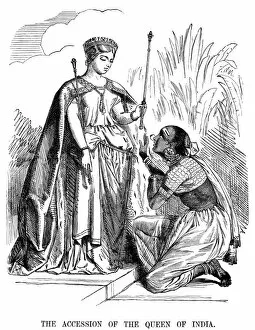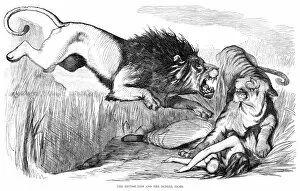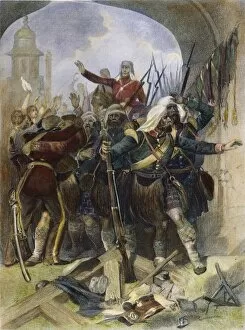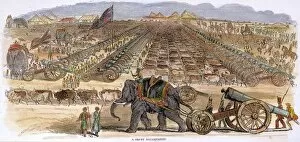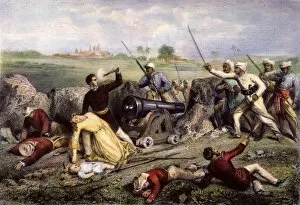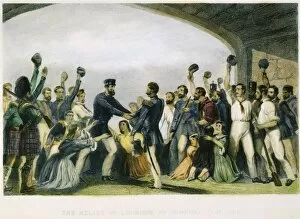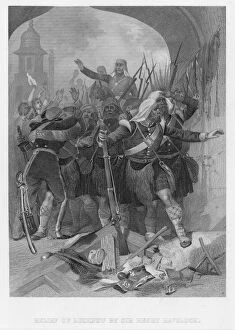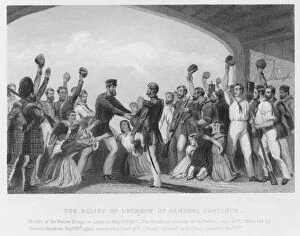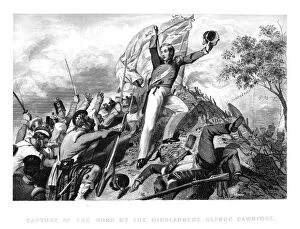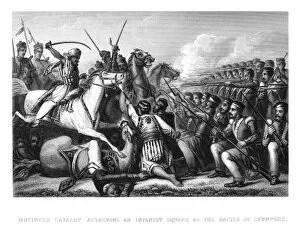Sepoy Mutiny Collection (#4)
"The Sepoy Mutiny: Unleashing Chaos and Carnage in Colonial India" In the mid-19th century
For sale as Licensed Images
Choose your image, Select your licence and Download the media
"The Sepoy Mutiny: Unleashing Chaos and Carnage in Colonial India" In the mid-19th century, a storm was brewing in colonial India that would forever change the course of history. Known as the Sepoy Mutiny or the Indian Mutiny, this violent uprising against British rule left an indelible mark on both sides. Baron Lawrence P_G03353_001, the then Viceroy of India, watched helplessly as tensions reached a boiling point. The Storming of the Cashmir Gate in Delhi on September 14, 1857 (1901) became a symbol of defiance and resistance against British oppression. The Death of Colonel Finnis at Meerut sent shockwaves through British ranks. Engravings from The History of the Indian Mutiny published in 1858 depicted Fugitive British officers and their families under attack by mutineers. The Massacre of English Officers and their wives at Jhansi further fueled anger and revenge. One haunting image captured by an albumen silver print showcased the aftermath within Lucknow's Secundra Bagh. Here, two thousand rebels met their demise at the hands of fierce Highlanders and Punjab Regiment soldiers - a testament to brutal retaliation. Capture of a gun at Banda illustrated how rebellion spread like wildfire across different regions. Meanwhile, engravings chronicled Massacres off Cawnpore - boats stained with blood as innocent lives were mercilessly taken away. Inside Secundra Bagh's walls lay another grim scene; black-and-white photographs revealed remnants after two thousand rebels fell victim to Britain's wrath unleashed by the 93rd Regiment of Foot. Blowing mutinous Sepoys from guns became not just punishment but also spectacle for those seeking retribution. These engravings from The History of the Indian Mutiny painted a vivid picture of brutality inflicted upon those who dared challenge imperial authority. Amidst this chaos, one man emerged as a symbol of British resilience.

